Dachshunds: Socializing a Rugged Little Dog
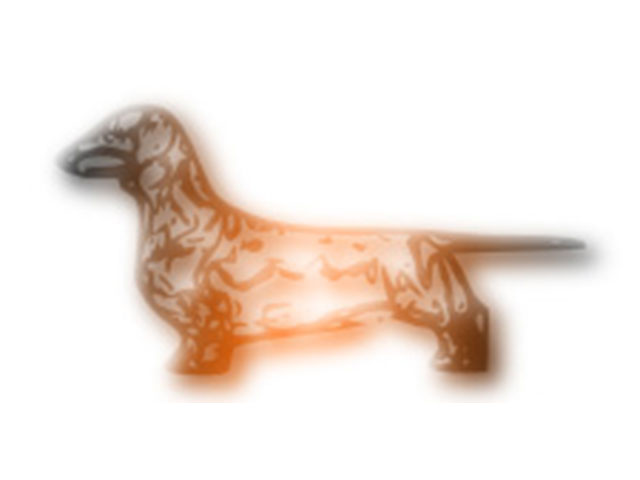
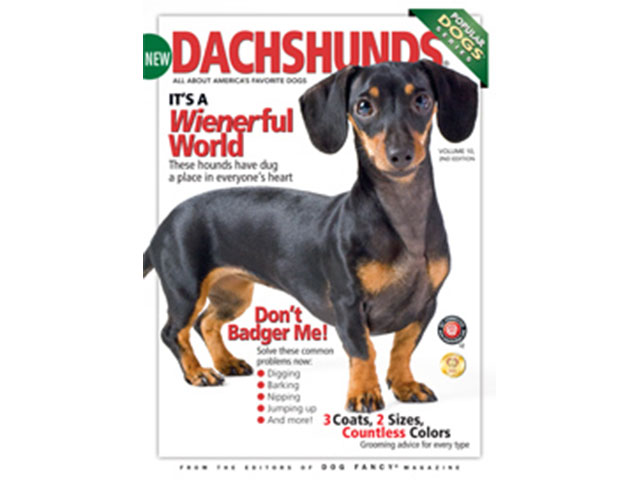
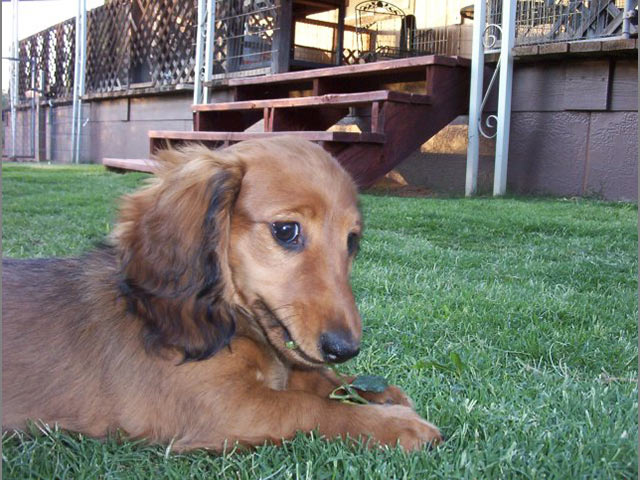
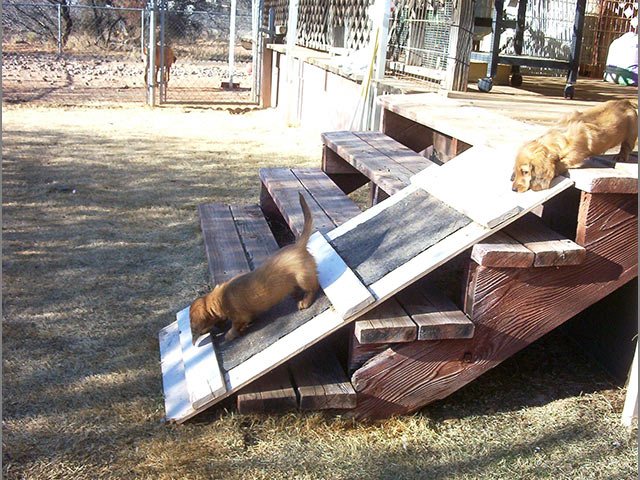
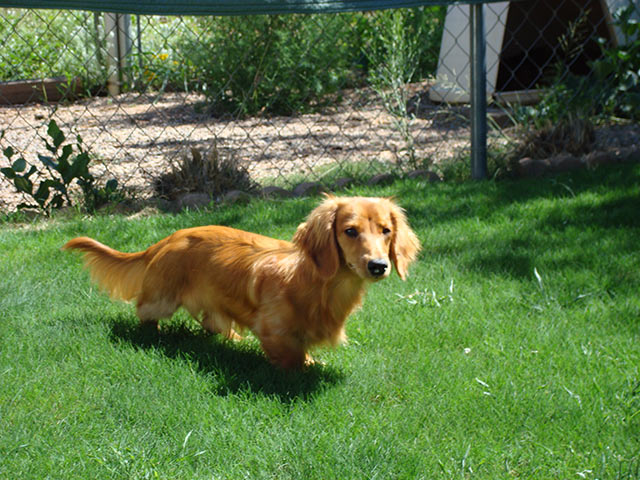
Training a puppy to be well socialized might seem like a big job. But Dachshund experts offer lots of practical, easy-to-do activities you can practice with your puppy right now. Remember, the earlier you start, the more successful you will be.
Keep in Mind Who This is!
Before you begin socializing your Dachshund puppy, take a moment to consider the fascinating history of the breed, and how this affects what you see today. For centuries, Dachshunds were bred to do a rather nasty job. They hunted badgers, chasing the animals down into muddy holes in the ground. More important, Dachshunds were bred to do this independently, with little or no direction from human leaders.
Since 1980, Lisa Warren has been breeding and training Standard Long-Haired Dachshunds, as well as miniature varieties. She says the Dachshund's history gives you something important to consider as you begin the process of socialization. "Dachshunds are supposed to be independent, even a little stubborn. It's not fair to choose this breed and then ask them to put that history aside!"
Ms. Warren says this, not as criticism, but as a way to help Dachshund owners form the best relationship with their puppies. She suggests holding onto this image of Dachshunds as independent dogs as you move forward with socialization. If you do that, she insists, the rewards are worth it. "Even saying they are stubborn, it's not hard to socialize Dachshunds. After all, they wouldn't be in the top 10 most popular breeds if they didn't make great pets. People seem to like having a dog with some more independence. Respect that independence. It can be endearing if you channel it in the right direction."
That raises the core question: how do you keep that lovable independence, but channel it so one day you have a full-grown Dachshund who is a pleasure to be around?
A Few Weeks for Socialization
Barbara Axel has been breeding, training, and showing Standard Long-Hair and Standard Wire-Hair Dachshunds for 51 years. She has also managed a puppy kindergarten since 1974. To introduce what socialization is, she first says what it is not. "Socialization does not mean putting the puppy in your lap and holding it."
With that said, socialization can be quite easy and enjoyable. Just break it down into manageable steps. At each step, remember that the goal is to keep the wonderful nature of your Dachshund, while having her recognize you as a source of confidence, leadership, and security.
Surface Exploration
Look around your home and yard, at the variety of surfaces that surround you. What you take as simple aspects of your environment are perfect opportunities to build a connection with your Dachshund puppy. Charlotte Borghardt has been active with Standard Long-Hair Dachshunds since 1967. She is the chairman of the health and welfare committee for the Dachshund Club of America, and she is an AKC judge. As a first step towards socialization, she says to expose your Dachshund puppy to one new surface each week.
"First, let him walk on concrete," Ms. Borghardt suggests. "Then let him walk over a wooden deck. Put small planks of wood on the ground and have him step over them." Make sure to do this, and all other surface exploration, with the puppy on leash.
After your puppy tries out some simple surfaces, Ms. Borghardt offers a more venturesome idea. "Get one of those non-slip rubber bathtub mats. Turn it upside down and let the puppy walk on it. The suction cups feel all squishy and weird."
This can be a source of amusement, as you watch your puppy navigating each new surface. Just make sure your puppy sees you there and associates your face with each newfound sense of confidence.
As the puppy grows, increase the challenges. "Get a ladder and lay it on the ground," Borghardt suggests. "Have the puppy step slowly over each rung. Don't be forceful, just encourage the puppy the whole time." You can get more creative and come up with other types of surfaces.
This is not meant to be agility training. The idea here is that your puppy explores, while seeing you in command the whole time. In the puppy's mind, everything is safe with you around. As Borghardt says, "The puppy might not really want to step over those ladder rungs, but he'll learn to trust you and know that you would never put him in a dangerous situation. He learns that he has to listen to you, but that whatever you tell him to do is OK."
From this simple set of steps, you are preparing your puppy to trust you in more complex and unpredictable social interactions that will come up in the years ahead.
Touch Training
There are lots of quiet times with your puppy. These can be transformed into socialization sessions. Next time you get the urge to pet your puppy, pick her up and put her on a counter top. Gently touch her ears and mouth, then her feet. Most puppies do not like being touched like this, so each time she lets you do it give her a treat and say how wonderful she is. Ms. Borghardt says this exercise has long-lasting socialization benefits. "The puppy is thinking, 'I'm not really crazy about having my feet touched, but it's not bad so I'll let you do it.' You don't do these things for a long time, just three seconds then release. You're in charge, but not forceful."
Try to do this every day for the first couple of weeks. The payoff will come when you take your Dachshund to the vet's office. By that time, she will be used to standing on a counter and she might actually enjoy being examined. It will be worth it just to hear your vet say what a wonderful puppy you have!
Challenging Personal Space
Dachshunds were bred for centuries to be tough little dogs. Find ways to shape that toughness to be more socially acceptable. This sounds like a complicated task, but, just like surface explorations, use simple steps to achieve bigger goals. Find appropriate times to present a calm but assertive challenge to your puppy's personal space.
For example, Dachshunds love to eat, so meal times present one of the best opportunities for socialization. Give your puppy a bowl of food. While she is eating, kneel down so you are near her height and pet her gently. This makes the puppy associate being touched – a slight invasion of her space – with eating. She learns to tolerate it, even welcome it, instead of getting upset.
Next, Ms. Borghardt describes how to take the feeding exercise up another notch. "One time, instead of petting him, take the food bowl away. Put a different kibble in it, then put the bowl back." Why would an owner do this? Is it just to antagonize the puppy? Ms. Borghardt says it gives the puppy a whole new perspective on trust. "The puppy learns quickly that when you take something away, he ends up getting something even better and more interesting."
The same kind of positive challenge can be applied with chew toys, which Dachshunds are often fiercely reluctant to part with. As Ms. Borghardt says, "Dachshunds don't always understand sharing. But you should teach them not to be possessive. Give him a toy, then take it away. If he growls, keep the toy away. When he doesn't growl, praise him a lot, then give the toy back." This is not meant to be a power struggle. This exercise shows your Dachshund that good feelings are generated from sharing. She also learns to allow others to get up close and personal, even with her favorite possessions.
This kind of training can be extremely valuable. Let's say you have guests over your house, and they bring their small child. When the child tries to take a stuffed toy away from your Dachshund, you can be confident that there will not be any scary incidents. Another real-world scenario is when you are out on a walk and your Dachshund picks up an unspeakably disgusting object from the sidewalk. The hunter instincts come out. But because of your training, you will be able to take the object away without a fight.
Different Social Situations
After you have built up a good bond through surface explorations, touch training, and challenges to personal space, head out with your puppy into a busy place. Again, make sure your puppy is on leash for all this, as the point is for her to always see you as a source of command and security.
Stores like Home Depot are a good choice. They often let people come in with a puppy on leash, and they are bustling with noise and activity – perfect places to build confidence. "Just walk around the store," Ms. Borghardt suggests. "Don't force anyone to pet your puppy, but just let them approach and touch the puppy. The whole time, you just act nonchalant about all of it." The puppy reads your body language and learns that all this activity is positive.
Puppy Kindergarten: Great Idea, But Choose Wisely
You can accomplish a lot, just you and your puppy. At some point, though, you will want to get your puppy into groups of dogs. One of the best ways to do this is at a puppy kindergarten. These are offered at pet centers throughout the country, and they are terrific for taking socialization to the next step. It is important, however, to be a wise consumer and choose the best program.
What to Look For
"Not all classes are equal," Ms. Axel explains. After running her own puppy kindergarten program for over 35 years, she knows that not all programs have a good atmosphere for Dachshunds. Take the time to observe the class and watch the teacher. "Look for a teacher that has a good rapport with students and puppies," Ms. Axel advises. "The teacher should be able to lead the puppies without force. Look for a teacher who works with groups of dogs and does not just focus on one dog at a time while the rest of the group stands around."
The right puppy kindergarten is a place where you can continue building on the essential progress you made at home. As Ms. Borghardt emphasizes, "It should be a class. It shouldn't be a free-for-all where everyone's dog runs loose. There should be structure, for owners as well as puppies. It should be a place where the puppies are learning how to relate to other dogs."
Do not be afraid to question the teacher about larger goals for the class, and guiding philosophies. "The teacher should be able to verbalize what they are doing," Ms. Axel says. "If they can't explain what they do, and why they do it, it might not be a good class for you."
Some Things You Should Not Do
As you work with your puppy at home and in kindergarten classes, your Dachshund will develop ever better social skills. Along the way, try to avoid some common pitfalls.
Off-Leash: Too Much of a Good Thing
It seems that letting your Dachshund puppy have open play with lots of other dogs is a wonderful form of socialization. However, Dachshund experts strongly advise against this. Ms. Axel says that off-leash play parks, which have become popular in recent years, are a bad idea. "When I started with Dachshunds, I also thought this was great. But it too often ends up being a place where more submissive dogs get bullied. It can be a disaster."
Ms. Borghardt agrees, and has seen Dachshunds learn negative behaviors in situations like this. "It could very easily make your Dachshund afraid of big dogs forever."
Even if your puppy is dominant, open play parks may threaten all the progress you have achieved in forming a crucial socialization bond. As Ms. Axel explains, "You want the puppy's attention on you in those early months. The puppy should be watching you." Dachshunds are smart. Going to the play park may teach them ways to avoid listening.
You do not have to be a complete spoil sport. When your puppy is a little older, closer to a year, Ms. Axel says going to the park can become a training opportunity. "Let the puppy play for five minutes, then call him over and make him sit or stay. Then let him go back and play." This makes the puppy more secure, knowing that that even in the most chaotic social situations you are in command. It also shows your puppy that you know how to have some fun!
Putting it All Together
While extremely important, proper socialization is not difficult or complicated. It does not stop you from bonding in a loving way with your puppy. In fact, it can be exciting and fun for you and your Dachshund, and can lead to the strongest emotional connection. Become the center of your Dachshund's social world by showing that you are a calm, confident, loving, and worthy leader. You will have a great relationship, and a great dog, that you are proud of.
